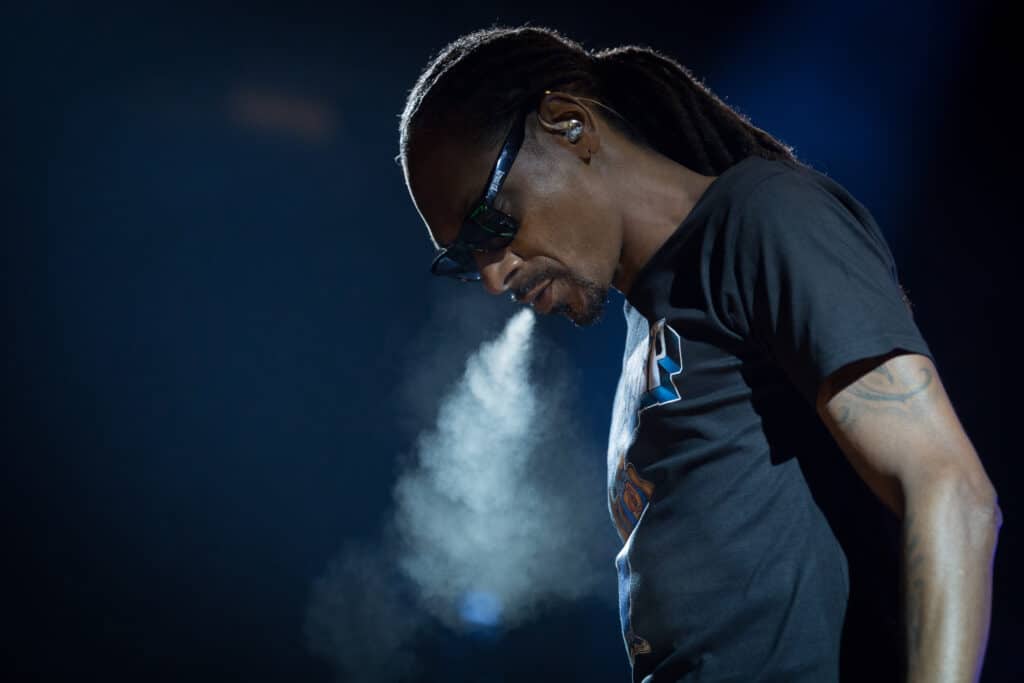He’s an artist that belongs on the Mount Rushmore of the rap game and has almost single-handedly defined an era in his genre over the course of his legacy. The man in question is Snoop Dogg, and it was in high school that he first began his journey on the road to becoming a legend.
Snoop Dogg attended Long Beach Polytechnic High School, which he graduated from in 1989. It was here that Snoop first found he had a talent for rapping, due to the popularity his performances had in school.

While other students at high school will usually find a calling in life through some combination of the lessons they receive and the interests that they begin to develop, Snoop found it there by happenstance.
Simply by rapping in the school’s hallways, he attracted crowds. It could have happened anywhere, but Long Beach Polytechnic was ground zero.
Snoop’s Early Teen Years
While he was first entering into his high school years and had yet to climb the hip-hop ladder to the dizzying heights that he now sits at, we can see a very different image of the iconic Snoop Dogg.
It’s a struggle to imagine it since his early image and sound has become so synonymous with the typical ‘rap stereotypes’, but when he first began attending high-school Snoop was almost the complete opposite of who he had become when he started gaining popularity.
Remove the prototypical G-funk sound, and replace it with the serenity and high notes of the church gospel. Remove Snoop Dogg, and replace him with young Calvin Cordozar Broadus Jr., a happy and diligent student.
This was Snoop’s life leading into high-school, and despite the rockiness of being part of a divorced household, he was generally considered to be doing very well in his academics, as well as working multiple jobs.
Those teenage years that high school brings with it were about to hit, however, and everything was going to change.
Snoop at Long Beach Polytechnic
Thanks in part to the transformative power of the adolescent years, and perhaps simply mixing with the wrong crowd, Snoop was slowly being exposed more and more to the street life that eventually became the subject of so many of his early tracks. Gone were the gospels and the good student image, as Snoop eventually became embroiled in a life of crime.
The first taste of that life was his joining of the Rollin’ 20s, a Crip gang.
Snoop remembers these years well, and now that he has experienced every step of the process that leads to getting into that life, and out of it, his evolution allows him to look back on those years in a unique way.
Despite the eventual criminality, Snoop appeared to have everything set on the right track, even participating in sports as a quarterback for the school football team. So what was it that went wrong?
He commented on it himself during the mid-2000s, stating that the age these temptations and derailments arrive is far earlier than becoming a teenager. He estimates the age to be around nine or ten that children will begin becoming exposed to, and eventually corrupted by, the streets.
Transformation
Part of the radical transformations that Snoop has undergone throughout his career, moving from the image of a gangster rapper to something of a media darling, is in part due to his experiences with high school and gang life.
One of the co-founders of the Crips, Stanley Williams, was something of a mentor to Snoop, with Snoop even going so far as to describe him as the “brother that he never had.”
Williams wasn’t only a role model to Snoop while he was in high school and getting deeper and deeper into gang life, either. In the same way that he was part of Snoop’s transformation from a saintly student to a veteran of the streets, he was always part of the process the other way too.
One of the things that Williams put a focus on for Snoop was the importance of children, and how especially vital it was to intercept any negative influences during those early high school years.
It’s why youth projects have been such an important passion project for him with his charity, from hospitals to football clubs, whatever he can do to alleviate the issues facing disenfranchised youths.